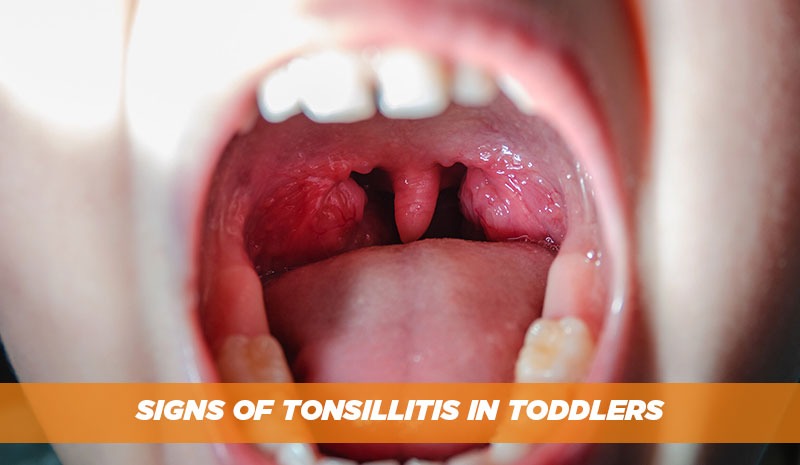Signs of Tonsillitis in Toddlers Every Parent Should Know

Introduction
Toddlers aren’t great at telling us what’s wrong, but their behavior can speak volumes. If your child suddenly becomes fussy, refuses to eat, or has a fever with a sore throat, tonsillitis might be the hidden culprit. In this article, we’ll explore the most common signs of tonsillitis in toddlers, how it differs from a simple cold, and how you can help your little one recover quickly.
What is Tonsillitis in Toddlers?
Tonsillitis is the inflammation of the tonsils — two oval-shaped glands at the back of the throat that help fight infections. In toddlers, these tissues are still developing and are more vulnerable to viruses and bacteria.
Common causes include:
- Viral infections (like adenovirus or influenza)
- Bacterial infections (especially Streptococcus group A)
- Frequent exposure to sick children (playgroups, daycare)
Why Toddlers Are at Higher Risk
Children between the ages of 1 and 5 are at the highest risk of developing tonsillitis. Here’s why:
Immature immune systems: Still building defenses
- Close contact: Daycares and preschools expose kids to constant germs
- Mouth breathing: Can dry the throat and irritate the tonsils
- Thumb-sucking or pacifiers: May carry bacteria directly into the throat
Key Signs of Tonsillitis in Toddlers Every Parent Should Know
Even if your child can’t express pain clearly, there are visible and behavioral signs you can watch for:
1. Physical Symptoms:
- Red, swollen tonsils (may have white patches or pus)
- Fever (above 100.4°F or 38°C)
- Sore throat
- Bad breath
- Swollen lymph nodes (neck or under the jaw)
- Cough or hoarse voice
- Drooling (due to pain while swallowing)
- Ear pain (referred from the throat)
2. Behavioral Signs:
- Irritability or clinginess
- Crying when swallowing food or liquids
- Refusal to eat, especially solid foods
- Disrupted sleep
- Low energy or unusual sleepiness
Behavioral Clues Parents Often Miss
Let’s face it — a cranky toddler isn’t unusual. But it’s time to dig deeper when crankiness is paired with unexplained refusal to eat, interrupted sleep, or sudden drooling.
Look for these subtle patterns:
- Your child starts refusing favorite foods
- Increased crying during mealtimes
- Constant hand-to-ear or jaw movements
- Sleep regression or waking up in discomfort
- Change in tone of voice — sounding scratchy or muffled
When to Call the Pediatrician
You should call your pediatrician if:
- Your toddler has a high fever (>101°F) for more than 2 days
- Breathing is noisy or labored
- Refusal to drink fluids (signs of dehydration)
- Drooling with difficulty swallowing
- You see white patches or red, swollen tonsils
- Symptoms don’t improve within 3–4 days
Diagnosis & What to Expect at the Doctor’s Office
Your pediatrician will likely:
- Examine the throat, ears, and nose
- Check for swollen lymph nodes
- Possibly perform a rapid strep test
- Recommend a throat culture if needed
Treatment Options for Toddlers
Treatment depends on the cause:
1. If Viral:
- No antibiotics needed
- Supportive care (rest, hydration, fever management)
2. If Bacterial (like Strept):
- Prescribed antibiotics (typically amoxicillin or azithromycin)
- Symptoms usually improve within 24–48 hours of medication
